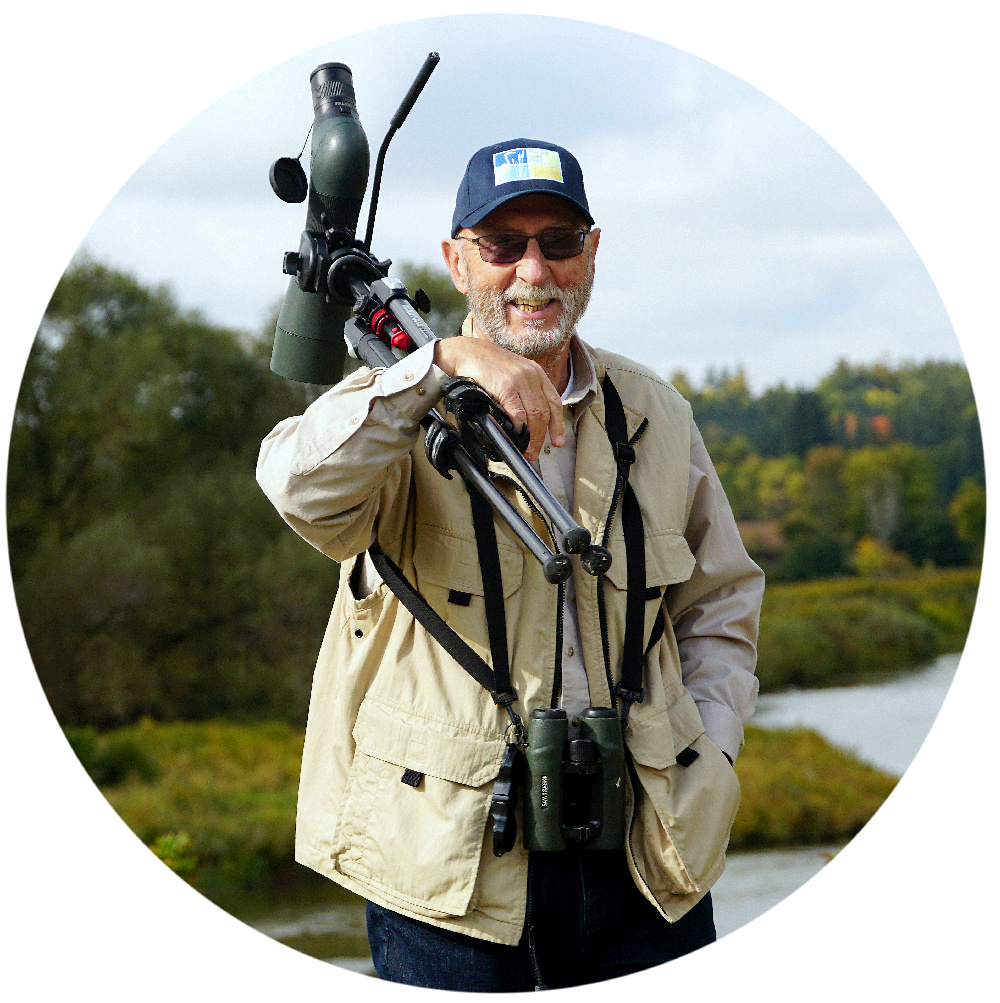Dickcissel Spiza americana is the only member of its genus in the family Cardinalidae. The scientific name translates straightforwardly to American finch.
This species, resembling a miniature meadowlark, is common to abundant throughout its range across the midsection of North America, where it inhabits native grassland, and readily adapts to agricultural uses, where it voraciously feeds on seeds, much to the chagrin and annoyance of farmers.
I first saw this species in Ontario about twenty-five years ago in a part of Richmond Hill which has now been totally converted to tract after tract of residential development. At that time a fellow birder located a male and in searching together in the days following his discovery we found a female also, giving at the least the possibility of breeding. We were never able to confirm whether nesting occurred or not.
At that time a Dickcissel in southern Ontario was a mega-rarity, such that when I ended my term as Chairman of the the Board of a well-known Canadian charity, a picture of the species was painted and presented to me in honour of our rare sighting.
Since that time, up until the present, I have seen this species only once more in Ontario.
This is in stark contrast to this year, when Dickcissels seem to be everywhere throughout the Province of Ontario, with multiple sightings, even here in Waterloo.
Several other species are colonizing Ontario as climate change seems to herald a northward movement in their range, and I wonder whether Dickcissel is the next species to exemplify this trend.
Franc Gorenc, ever ebullient, wanted to take pictures of what was a new bird for him, and he and Carol, on a very windy day, visited its known location with us. We were not disappointed, seeing two males and a female. The conditions for photography were less than ideal, with very strong winds blowing the birds around as they perched, and constantly blowing grass in front of the lens to distort the focus. Despite this, a persistent Franc managed a couple of shots.
Having enjoyed seeing this enchanting little bird this year, we are left to wonder whether it will return again in 2018 to cement its status as a breeding bird in Ontario. Perhaps in years to come it will be a standard feature of our grassland ecosystem, taking its place alongside other common residents. It will be very welcome!
Subscribe to:
Post Comments (Atom)
Land Acknowledgement
We acknowledge that the land on which we are situated are the lands traditionally used by the Haudenosaunee, Anishinaabe, and Neutral People. We also acknowledge the enduring presence and deep traditional knowledge, laws, and philosophies of the Indigenous Peoples with whom we share this land today. We are all treaty people with a responsibility to honour all our relations.
Followers
Welcome

My name is David. I'm a lifelong birder, fiercely committed to all of nature, however. Married to Miriam Bauman. I love to travel. I Enjoy a good book and a good glass of wine. To read more about me, click my ABOUT page.
Follow by Email
Search This Blog
Blog Archive
Popular Posts
-
23 October, 2025 Predictably, Mallards ( Anas platyrynchos ) were easily found. You will note just left of centre in the picture...
-
I am quite confident in my judgement when I say that nuthatches (Family Sittidae ), small birds with a remarkable ability to scurry dow...
-
22 November, 2025 Leader: David M. Gascoigne Participants: Farid Asey, Heela Asey, Mina Asey, Palwasha Asey, Sameer Asey, Mary Ann Cassidy, ...
-
It has been a long time since I received those annoying, “Fail to publish, please try again later,” notices, but it is happening aga...
-
02 November, 2025 We had been invited to take a stroll though Laurel Creek C.A. with good friends, Dave and Mary, followed by coffee ...
-
29 November, 2025 After a snowy overnight, with everywhere white and glistening, it was a perfect day for an outing with our little Pri...
-
“To raise a nature-bonded child is to raise a rebel, a dreamer, an innovator… someone who will walk their own verdant, winding path.” Nicol...
-
I just returned from a successful and highly enjoyable visit to Colombia with birding friends. We'll all have very fond memories fo...
-
As I continue to be afforded the great pleasure of leading outings for Waterloo Region Nature, I am offering two options for local de...
-
6th Mass Extinction - Nat Morley "Man has lost the capacity to foresee and forestall. He will end by destroying the Earth." Albert...
























Excellent record! I hope you can see it more often in the region
ReplyDeleteInteresting and pretty bird. It was nice to read Your post. Greetings!
ReplyDeleteThey are beautiful, so rare. Thanks for showing me David.
ReplyDeleteA charming little bird, David. I hope that you do have the pleasure of its company in future years too. Sadly, whilst the warming factor of climate change brings the excitement of the prospect of new breeding species to an area, the general shift northwards means that some once-familiar species will probably disappear in that direction. Add to this the other aspects of climate change - stronger winds and more extreme rain patterns - and the future looks bleak. But never mind, that anal sphincter Trump says it's all just a figment of our imagination! Did you say that I would never make a comment that could offend? ;-}
ReplyDeleteMy love to you both - - - Richard
Now don't you be insulting anal sphincters like that!
DeleteHa ha Richard has said it all, I could not agree more.
ReplyDeleteLove the painting that you were given, sure it had pride of place in your home.
Cheers Diane
Hi David,
ReplyDeleteand what a delightful little bird, lets hope you see them again next year. agree totally with Richard regarding Trump, and you ref insulting sphincters. All the best, John
Wow!!! Que pájaro más bonito, y las fotos son fantásticas. Me ha gustado mucho este post David, un fuerte abrazo desde España.
ReplyDelete'Enchanting' is the correct word! Such a beautiful little bird...
ReplyDeletebut as Richard writes, the future doesn't look good. Reading the news, I feel so terribly sorry for the younger generations that will inherit a massive environmental crisis.
I don't know what a... s... means, must consult my dictionaries. :D
Thanks for your fun comment, David!
ReplyDeleteWell I though someone would notice these 2 facts and it had to be you! LOL!
So to answer your question, my blog is also my note book too as well as a showcase for my wildlife and travel pics.
And secondly, that day 2 was quite memorable and I didn't have an opportunity at fauna photos but in the next post, I'll catch up ;-)
I can see you've uploaded pics with people and food too!!
I went through your latest posts, the Indigo bunting is a stunner!
Lovely pics of the sandpiper and all the different birds you encontered, congrats :)
Keep well and share abrazos with Miriam :)))
A beautiful bird with his yellow chest.!
ReplyDeleteI wish we had this bird in the Netherlands.
Great beautiful pictures of this bird.
A hug